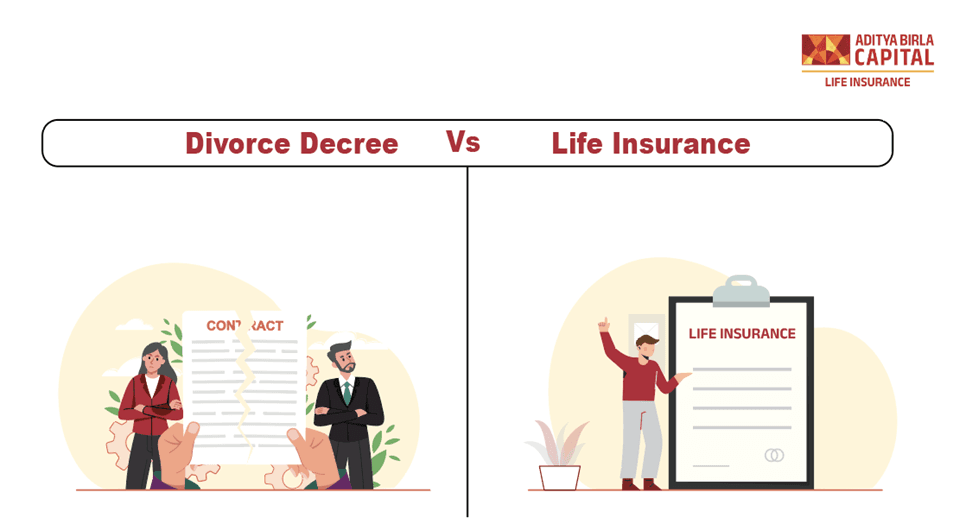Aditya Birla Sun Life Insurance Company Limited
How to use Life Insurance for Retirement

Plan Smarter, Live Better!

Thank you for your details. We will reach out to you shortly.

Currently we are facing some issue. Please try after sometime.


- Table of Contents
A report4 from the Economic Times of India shows that around 80% of urban Indians are not ready for their retirement life. People are keen on earning money but do not invest it for future returns or stability. This is why they panic about how their retirement life would be.
You need to understand that retirement is when you will have no steady income, and hence, it is important to plan for the same as soon as possible. This phase of life is inevitable. The financial decision that you make today while you are still earning can help cover most of your expenses in the future after you stop earning too. Being independent even during retirement life is not just a choice but should also be your first priority. These funds can be used to handle medical expenses, emergency requirements, and even day-to-day expenses after you retire. It is a way of making sure that you will continue to contribute to your and your spouse’s needs without expecting somebody else to do that for you.
How can use life insurance for retirement? What should you know about a retirement plan? When is the right time to start investing? Are you ready for your retirement life? Find out now.
Retirement Plan - Introduction
A retirement plan is a type of insurance policy that will help you meet all your retirement needs with ease. Irrespective of the fact that you will not earn in the future or the cost of living increases, a retirement plan can help you meet both everyday and emergency expenses.
A retirement plan may give you either a lump sum or periodical income once you retire.
Why should you choose a Retirement Plan?
Financial independence is a power that everyone wants to have, especially when it comes to retirement life. You spend years of your young age working, to be financially independent. Here are a few reasons why investing in a retirement plan is a wise choice.
- Inflation And Expenses Are on The Rise
According to these inflation stats5 by Statista, inflation in India has risen from 3.15% in January 2021 to 5.84% in January 2022. The expenses involved in your daily groceries, medical expenses, and other utility bills will continue to increase over the years. This is why you should financially secure your post-retirement life. - Early Retirement
This report6 by HR Katha shows that people want to retire early and enjoy their retirement life. In the past years, people were retiring at 60-65 years of age. But nowadays they are willing to retire between the age of 50-55 years and this calls for the need for early financial planning for your retirement life. - Life Expectancy Has Increased
The life expectancy rate in India7 has seen a continuous rise. It has increased from an average of 50 years in the 1990s to 65 years in 2020. So, you need to plan for an increased duration of no income. In other words, we will face 2-3 times the retirement needs that our previous generation faced. This is why adjusting your policy based on this cost of inflation becomes significant.
Now that we have seen the significant importance of why you need a retirement plan, let us know more about the various types of plans that are available in the market.
Types Of Retirement Plans
General Annuity Plan
A General Annuity Plan is a combination of savings and income. So, basically, you pay regular premium amounts during the accumulation phase which will be accumulated as a fund. These funds will then be disbursed in regular payouts during your retirement life.
How does it work?
- You will be required to make periodic premium payments which are accumulated as a fund. This fund will be converted into an annuity, i.e., a regular income during your retirement.
- The annuity rate is determined by the Insurer at the time of buying the policy. Depending on such rates, the annuity payouts are calculated.
- The annuity payments will be made available to you based on the customizations that you choose for your policy.
Note: The calculations for the annuity payouts are based on the premiums you pay minus any taxes.
| Pros | Cons |
| The plan is the most feasible and clear one as the annuity payments and premium payments are closely integrated. When the annuity starts getting disbursed decades later, it might not match up to the then-current inflated market rates. This is because the rate of inflation has been increasing over the years and is expected to rise further. | The plan is the most feasible and clear one as the annuity payments and premium payments are closely integrated. When the annuity starts getting disbursed decades later, it might not match up to the then-current inflated market rates. This is because the rate of inflation has been increasing over the years and is expected to rise further. |
Let’s look at an example to understand General Annuity Plans better -
Rajiv is 35 years old and buys a general annuity plan with the aim of retiring at the age of 50. He decides to pay the premium amount for a period of 15 years and receive annuity payouts for a period of 25 years.
His plan commences on 1st November 2022 and the premium payment term ends on 1st November 2036. He will start receiving annuity payments from 1st November 2037.
The premium payable annually: Rs. 1,00,000 (exclusive of tax)
Total premium payable: Rs. 15,00,000 (1,00,000 * 15 years)
Let’s assume that the annuity rate set by the insurer is 5%, then the annuity payout Rajiv is entitled to receive post-retirement would be 5% of Rs. 15,00,000 = Rs. 75,000.
This shows that Rajiv will receive annuity payouts of Rs. 75,000 every year from 1st November 2037 to 1st November 2061.
Single-Premium Annuity Plan
This type of insurance plan is a good choice if you haven’t pre-planned and invested money when you’re young. You can choose to buy a Single-Premium Annuity plan when you near retirement. The plan requires you to invest a lumpsum of your savings or your retirement benefit amount. On doing so, you will receive a steady periodic annuity payment post your retirement. The annuity rate for the same is calculated by the insurer at the time of purchase of the policy. The rate will not change throughout the payout period.
How does it work?
- Unlike General annuity plans these plans will not accumulate your premium payments over the years but require you to pay a lump sum value as a single payment. The lumpsum value may be your lifetime savings, maturity benefits from ULIP**, or mutual fund returns.
- The single premium is converted into annuity payouts depending on the annuity rate set by the insurer.
- The annuity payments will be made available to you based on the customizations that you choose for your policy.
Note: The calculations for the annuity payouts are based on the premiums you pay minus any taxes.
| Pros | Cons |
| It is a convenient way of securing your retirement future by paying a lumpsum amount and getting periodic annuity returns. For people who have missed out on an early investment, this would be the best choice for a happy retired life. Though it is best suitable for people who missed out on an early investment it is only applicable to people who have a lumpsum savings value or from other sources of income. | Though it is best suitable for people who missed out on an early investment it is only applicable to people who have a lumpsum savings value or from other sources of income. |
| Example: |
| Sherly is an IT employee who is 54 years of age. She plans to retire at the age of 55 and is entitled to receive a maturity return of Rs. 20 lakhs from mutual fund investment. She decides to buy a single-premium annuity plan for an annuity payout period of 25 years. She invests in the plan on 1st November 2022 and from 1st November 2023, she is entitled to receive annuity payouts as the payout period begins after a year. Say the annuity rate agreed is 6%: This shows that Sherly will receive Rs. 1,20,000 every year as her annuity payout from 1st November 2023 to 1st November 2047. |
Pension Accumulation Plan
A pension accumulation plan is one that accumulates your savings and returns it back as a lump sum on retirement. You can start as an early bird by investing in such plans and accumulate wealth until you retire. So, you receive a lump sum value in one go that can be used for retirement life.
There are two types of pension accumulation plans. They are:
- Unit-Linked Pension Accumulation Plan In this plan, the premiums paid by you are invested in the stock market and your future returns depend on the performance of the market. This means that the returns may vary in accordance with the fluctuation of the market conditions.
- Non-Linked Pension Accumulation Plan This plan doesn’t invest your premiums in the stock markets and hence promises a fixed amount of returns. On maturity of your policy, the accumulated funds are paid to you.
A Word of Caution
The maturity amount entitled from a pension accumulation plan is subject to certain conditions set by the IRDAI (Insurance Regulatory Development Authority of India). Based on this you can:
How does it work?
- Invest 100% of the corpus net of withdrawals, if any, in a single-premium annuity plan provided by the same insurer.
- Invest 50% of the corpus net of withdrawals, if any, in a single-premium annuity with the same insurer and the rest of the amount (50%) in a single-premium annuity plan with a different insurer.
- Withdraw 60% of the accumulated funds (also known as a "commutation"), and invest the rest of the amount in a single-premium annuity.
Please keep in mind: Other conventional accumulation plans like mutual funds, NPS, and ULIPs** are similar to this plan as they primarily concentrate on wealth accumulation. Compare and weigh its characteristics with the returns, benefits and withdrawal limits of other plans before choosing it for yourself.
| Example: |
| Rahul, 35 years old, intends to retire at 55. He invests in a unit-linked accumulation plan to save for his retirement. He pays an annual premium of Rs. 3 Lakhs for a period of 20 years. The Net Asset Value initially was Rs. 500 and the applied charges are Rs. 5000. So, total number of units = (Money Invested - Charges)/NAV = 2,95,000/500 = 590 Let’s assume that over the period of 20 years Rahul accumulates an additional 5000 units, the total units that he will receive at maturity are 5000 + 590 = 5590 units. Let’s assume that the NAV at the date of maturity of the plan is Rs. 600, Here the total fund value = NAV x Number of Units = Rs. 600 x 5590 = Rs. 33,54,000. This shows that Rahul is entitled to receive Rs. 33,54,000 as his maturity returns. |
It is now time that we also have a brief knowledge of the different benefits attributed to a retirement policy.
Death Benefit
The nominee assigned to the policy will receive a death benefit if something uncertain happens to you during your policy tenure.
Death Benefit in Single-Premium and General Annuity Plans
Your nominee will receive the premiums accumulate so far. It is also called the return of purchase price by insurers.
| Single Life Annuity Plan | Joint Life Annuity Plan |
| You are the sole holder and your nominee will receive the purchase price if you pass away. | The policy is owned jointly with your spouse. Here the nominee will receive the purchase price when both of you’ll pass away. |
The insurer will pay the return of premium anywhere from 50% to 110% of the premiums paid depending on the plan chosen.
Death Benefit in Pension Accumulation Plans
| Unit-Linked Plans | Non-Linked Plans |
| Your nominee will receive the accumulated fund or 105% of the premiums paid, whichever is higher, in case you pass away during the policy period. | Your nominee will receive the total premiums paid plus any bonuses or 105% of the premiums paid, whichever is higher, in case you pass away during the policy period. |
Tax Benefits3
Tax Benefits3 for Single-Premium and General Annuity Plans
- Under Section 80C of the Income Tax Act of 1961, the premiums paid are entitled to tax exemption.
- However, annuity payouts are considered a form of income and are subject to taxation.
Tax Regulations3 for Pension Accumulation Plans
Under Section 80C of the Income Tax Act of 1961, the premiums paid are entitled to tax exemption. Under Section 10(10A), the partial amount withdrawn from the maturity value will be entitled to tax exemption.
To conclude,
A peaceful retirement life is something that everyone looks up to after spending an eternity working hard. This calls for investing in the right way to reap the best benefits. Insurers offer you a variety of plans to cater to your retirement needs. We hope this article helps you make an informed choice!
Thank you for your details. We will reach out shortly.
Thanks for reaching out. Currently we are facing some issue.
Buy ₹1 Crore Term Insurance at Just ₹465/month*
ABSLI Super Term Plan
Term plan designed for salaried individual.
3 Plan Options
Health Management Service Worth ₹46000
100% return of premium
Life Cover
₹1 crore
Premium:
₹465/month*
Most Popular Calculator
Buy ₹1 Crore Term Insurance at just @ ₹576/month*
4https://economictimes.indiatimes.com/wealth/plan/80-urban-indians-not-ready-for-retirement-survey/articleshow/88221144.cms
5https://www.statista.com/statistics/276322/monthly-inflation-rate-in-india/
6https://www.hrkatha.com/research/why-do-indians-want-to-retire-early/
7https://datacommons.org/place/country/INDutm_medium=explore&mprop=lifeExpectancy&popt=Person&hl=en
**In the Unit Linked Policy, the investment risk in the investment portfolio is borne by the Policyholder.
ADV/1/22-23/2750







